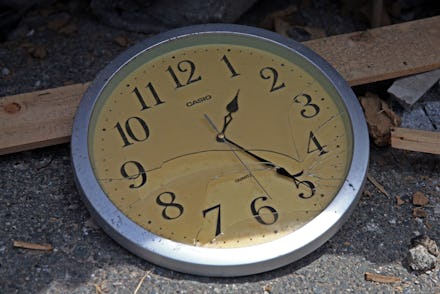The Length of a Second Could Change — WTF Does That Mean Exactly?

Nothing in life is certain. Not even the length of a second, if German researchers are accurate in their calculations. As the Independent reported, a group of them believe they've figured out how to measure a timepiece's ticking with unprecedented accuracy — which means the definition of a second, which has stood unchallenged since 1967, could soon be changed.
"What we demonstrated is a first step towards a global improvement of timekeeping," said Christian Grebing of the National Metrology Institute of Germany and an author of the paper on the clock, according to Science Daily.
Wait... what? Currently, time is measured atomically, using the transition of energy of an atom. Typically, it's a caesium atom, and the 9,192,631,770 transitions within it comprise a second. The International System of Units has defined it as such for nearly half a century.
Grebing and his team, however, swapped strontium atoms in for caesium; according to the Independent, strontium atoms cycle "in the optical, rather than the microwave, part of the spectrum." Atomic clocks measure microwave signals and are highly accurate, but these strontium clocks would be even better, with an error margin of less than .2 nanoseconds in 25 days. Atomic clocks have an error of around one nanosecond every 30 days.
So, that mean's what exactly? Were the world to shift its time measurement to optical clocks, humans wouldn't really notice a change, but GPS and satellite navigation services, online banking, power grids — basically anything that uses a timestamp would feel the shift. But according to Grebing, they wouldn't want to revise the length of a second for at least a decade, which suggests that that time is just a construct and/or what humans make of it.
Read more: Astronaut Scott Kelly Grew 2 Inches and Aged at a Slower Pace While in Space